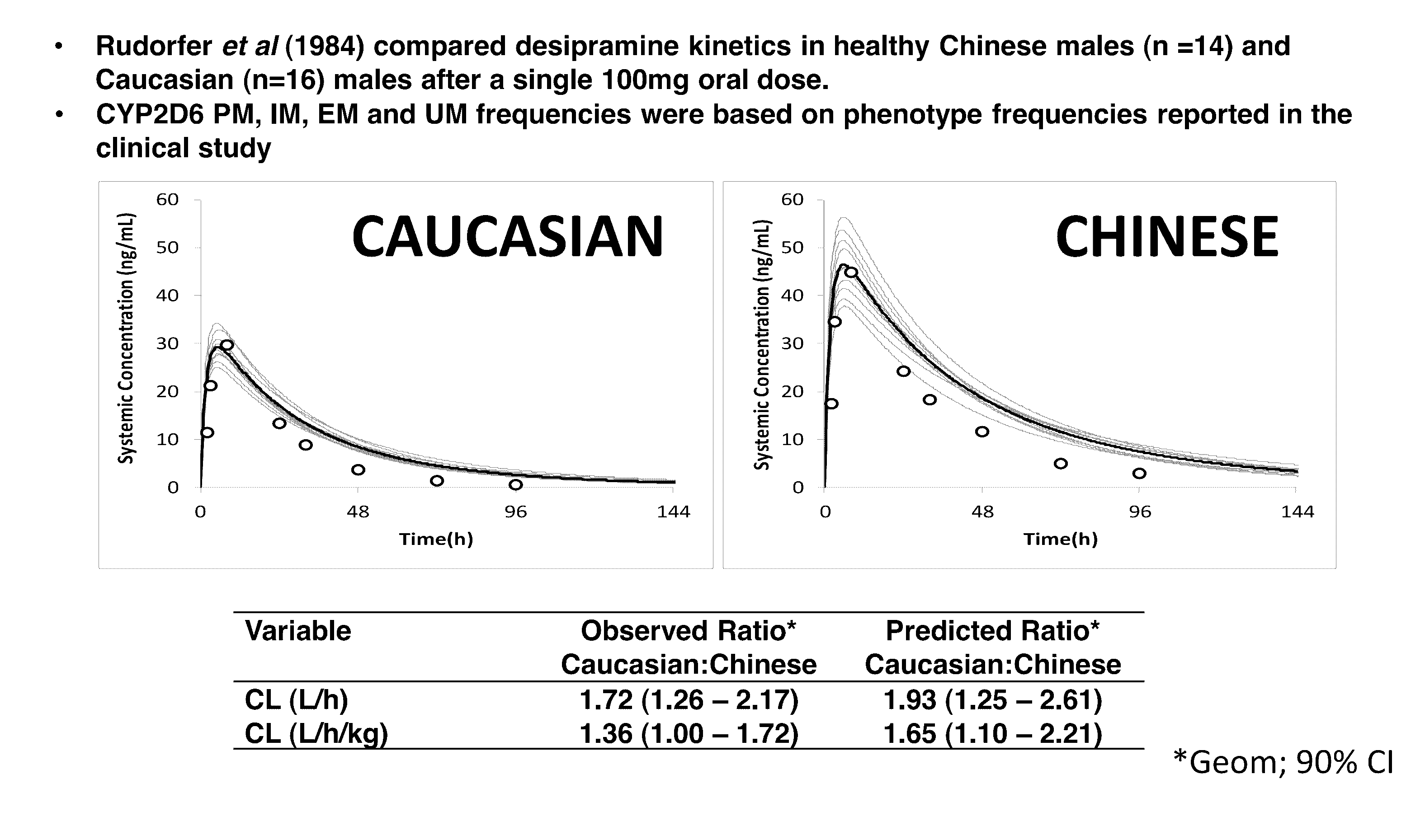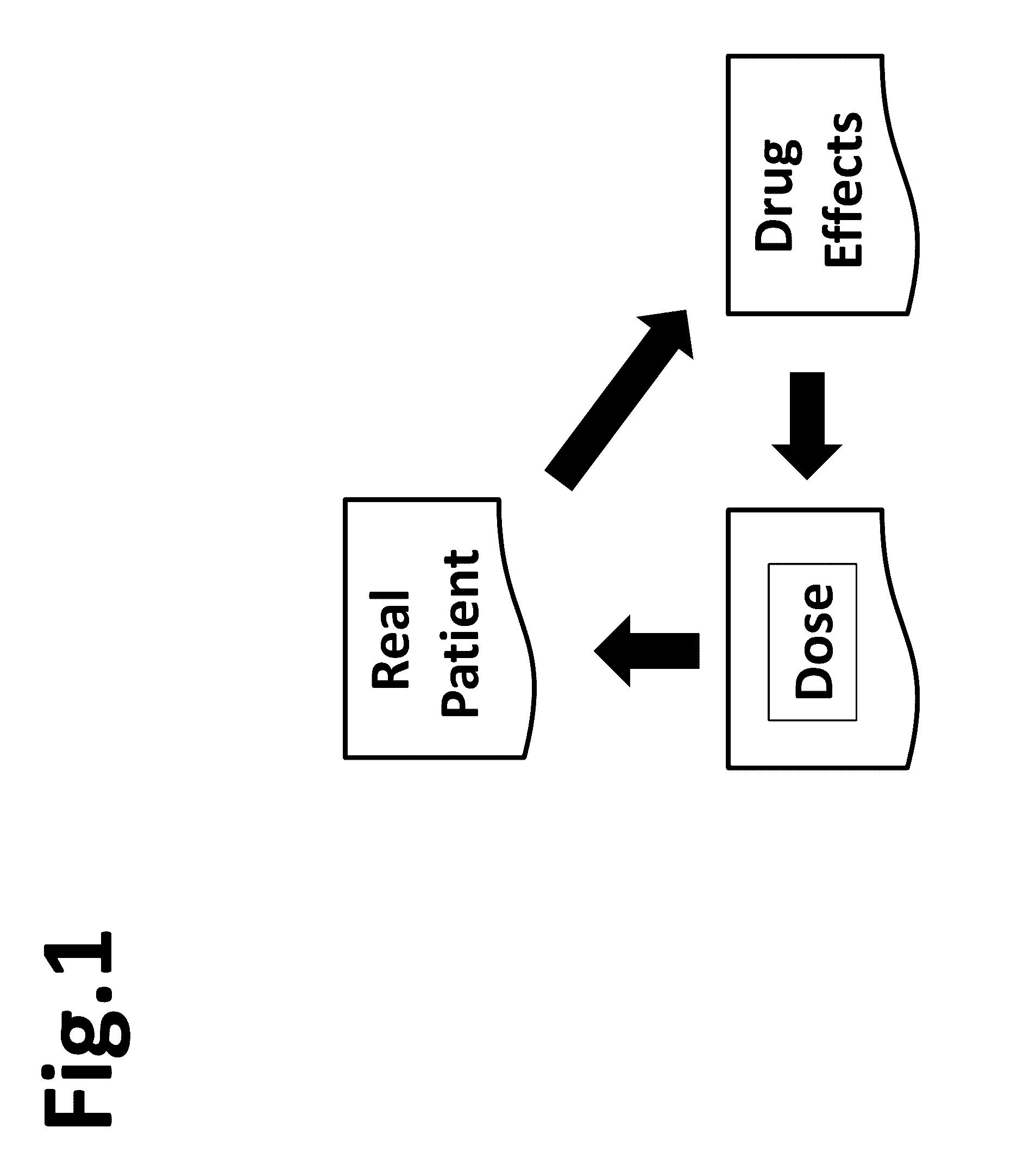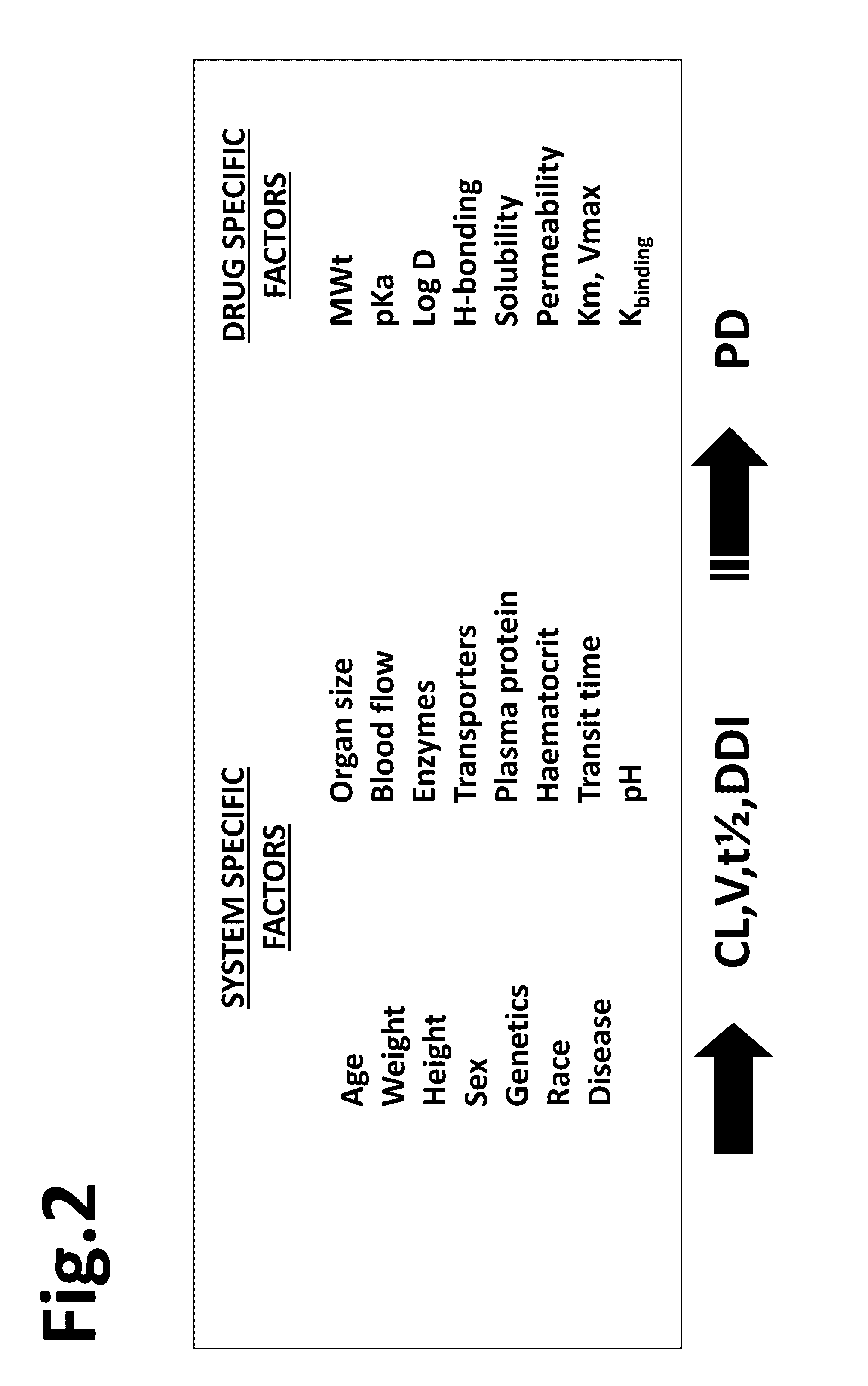Systems and methods for predicting and adjusting the dosage of medicines in individual patients
a system and patient technology, applied in the field of systems and methods for predicting and adjusting the dosage of medicines in individual patients, can solve the problems of lack of efficacy, escalating risk of complex drug-drug interactions, and quantitative differences in the response of individuals to a given drug dosag
- Summary
- Abstract
- Description
- Claims
- Application Information
AI Technical Summary
Benefits of technology
Problems solved by technology
Method used
Image
Examples
Embodiment Construction
[0026]As described above, the Simcyp Simulator®, models drug behavior across defined populations to predict pharmacokinetic and pharmacodynamics outcomes. Every real world (non-virtual) patient belongs to at least one general population. The present method utilizes knowledge about the general population to which the patient belongs to predict relevant pharmacokinetic and pharmacodynamic outcomes for the patient. As an adjunct to the conventional dosage paradigm, the modified Simcyp Simulator method of the present invention provides point-of-care drug dosage guidance that can potentially both speed up the process and help to reduce the number of follow up visits and associated health care costs by means of an easy to use and validated computerized system. A matching of the demographic, physiological and genetic characteristics of a real patient with his or her ‘Virtual Twin™’ by the computer enabled by the present invention facilitates exploration of the likely impact of changes in o...
PUM
 Login to View More
Login to View More Abstract
Description
Claims
Application Information
 Login to View More
Login to View More - R&D
- Intellectual Property
- Life Sciences
- Materials
- Tech Scout
- Unparalleled Data Quality
- Higher Quality Content
- 60% Fewer Hallucinations
Browse by: Latest US Patents, China's latest patents, Technical Efficacy Thesaurus, Application Domain, Technology Topic, Popular Technical Reports.
© 2025 PatSnap. All rights reserved.Legal|Privacy policy|Modern Slavery Act Transparency Statement|Sitemap|About US| Contact US: help@patsnap.com



